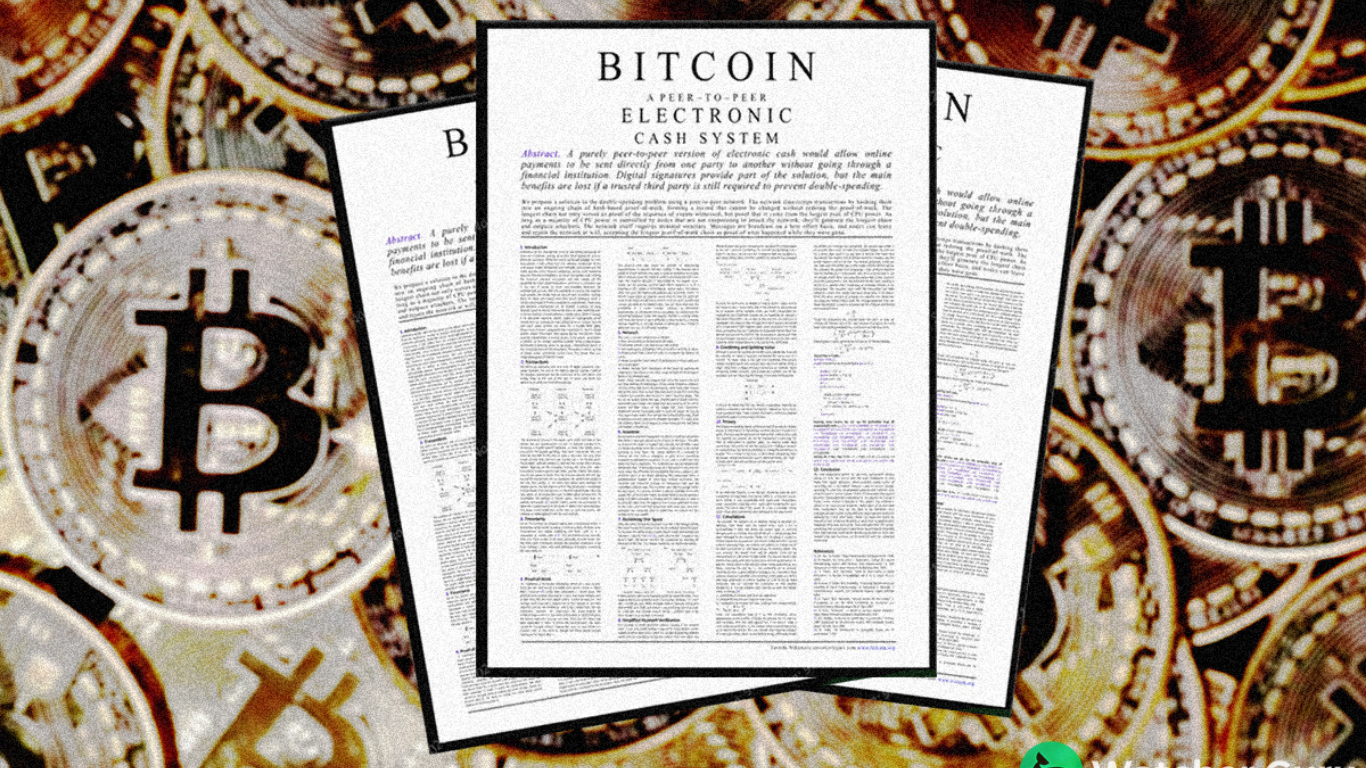Introduction
On October 31, 2008, an anonymous figure (or group) named Satoshi Nakamoto published a 9-page whitepaper titled:
“Bitcoin: A Peer-to-Peer Electronic Cash System”
This document introduced the first decentralized digital currency, solving long-standing problems in digital payments.
Why Was the Whitepaper Revolutionary?
✔ Eliminated trusted third parties (banks, governments).
✔ Solved double-spending without a central authority.
✔ Introduced blockchain technology—a tamper-proof public ledger.
This article breaks down the whitepaper’s key concepts, innovations, and lasting impact on finance.
1. The Core Problem: Trust in Digital Payments
Before Bitcoin, digital payments required centralized intermediaries (e.g., PayPal, banks) to:
- Verify transactions.
- Prevent double-spending (spending the same money twice).
Why Centralization Was Flawed
- Censorship: Banks could freeze accounts.
- Fees: High transaction costs.
- Fraud risk: Chargebacks and reversals.
Satoshi’s Solution: A decentralized network where users enforce rules via cryptography & consensus.
2. Key Innovations in the Bitcoin Whitepaper
A. Blockchain: The Public Ledger
- A chronological chain of blocks containing transactions.
- Immutable: Once recorded, data cannot be altered.
- Transparent: Anyone can audit transactions.
B. Proof-of-Work (PoW): Securing the Network
- Miners compete to solve complex math problems.
- The first to solve it adds a new block and earns Bitcoin rewards.
- Makes attacks extremely expensive (51% attack problem).
C. Decentralized Consensus
- No single entity controls Bitcoin.
- Nodes (computers) follow the longest valid chain rule.
- Incentives: Miners earn BTC; users get secure transactions.
D. Fixed Supply & Halving
- Only 21 million BTC will ever exist.
- Halving events (every 4 years) reduce new supply, mimicking digital scarcity like gold.
3. Breaking Down the Whitepaper’s Key Sections
Section 1: Introduction
- Identifies the double-spending problem.
- Proposes a peer-to-peer (P2P) solution using cryptographic proof.
Section 2: Transactions
- Explains how digital signatures authorize payments.
- Transactions are broadcast to the network but not immediately final.
Section 3: Timestamp Server (Blockchain)
- Introduces the concept of blocks linked via hashes.
- Each block contains a reference to the previous one, creating an unbreakable chain.
Section 4: Proof-of-Work (Mining)
- Describes how miners compete to validate transactions.
- Adjusting difficulty ensures one block every ~10 minutes.
Section 5: Network
- Explains how nodes communicate.
- The longest chain = the valid one (prevents fraud).
Section 6: Incentives
- Miners earn block rewards + transaction fees.
- Early adopters benefit from BTC’s rising value.
Section 7: Reclaiming Disk Space (Simplified Payment Verification)
- Lightweight wallets don’t need the full blockchain.
- Uses Merkle trees for efficient verification.
Section 8: Privacy
- Bitcoin is pseudonymous (addresses, not names).
- Unlike banks, transactions are transparent but not directly tied to identity.
Section 9: Conclusion
- Summarizes Bitcoin’s decentralized, trustless model.
- Declares it “practical and enforceable”.
4. How Bitcoin Changed Finance Forever
A. Birth of a New Asset Class
- Digital gold: Scarcity + decentralization = store of value.
- Institutional adoption (Tesla, MicroStrategy, ETFs).
B. Blockchain Beyond Bitcoin
- Ethereum (smart contracts).
- DeFi (decentralized finance).
- NFTs (digital ownership).
C. Challenges & Criticisms
- Scalability: Slow transactions (7 TPS vs. Visa’s 24,000).
- Energy use: PoW mining consumes electricity.
- Regulation: Governments struggle to classify crypto.
5. Conclusion: The Whitepaper’s Lasting Legacy
Satoshi’s whitepaper wasn’t just about money—it was about freedom from centralized control.
Key Takeaways:
✅ Bitcoin proved decentralized money is possible.
✅ Blockchain is now a foundational tech (finance, supply chains, identity).
✅ The financial system will never be the same.
Want to explore more? Let me know if you’d like a deep dive into:
- How mining works (step by step).
- Ethereum vs. Bitcoin.
- The future of DeFi.
FAQs
Q: Did Satoshi invent blockchain?
A: No—the concept existed earlier, but Bitcoin combined it with PoW for decentralization.
Q: Can Bitcoin be hacked?
A: The network is highly secure, but exchanges/wallets can be vulnerable.
Q: How many people have read the whitepaper?
A: Millions—it’s one of the most influential tech documents in history.
